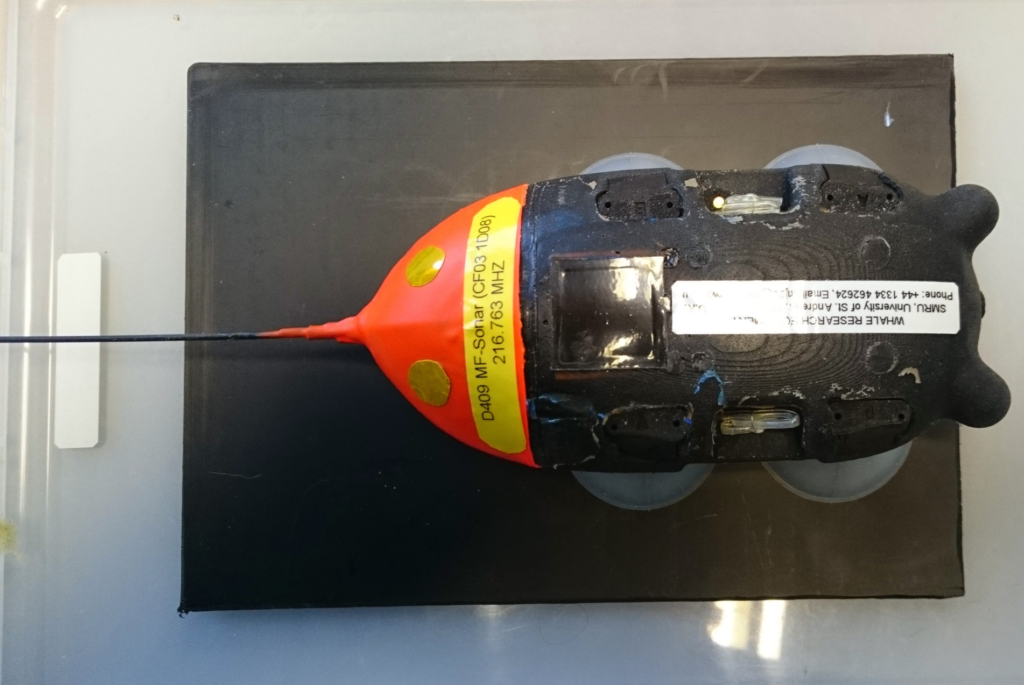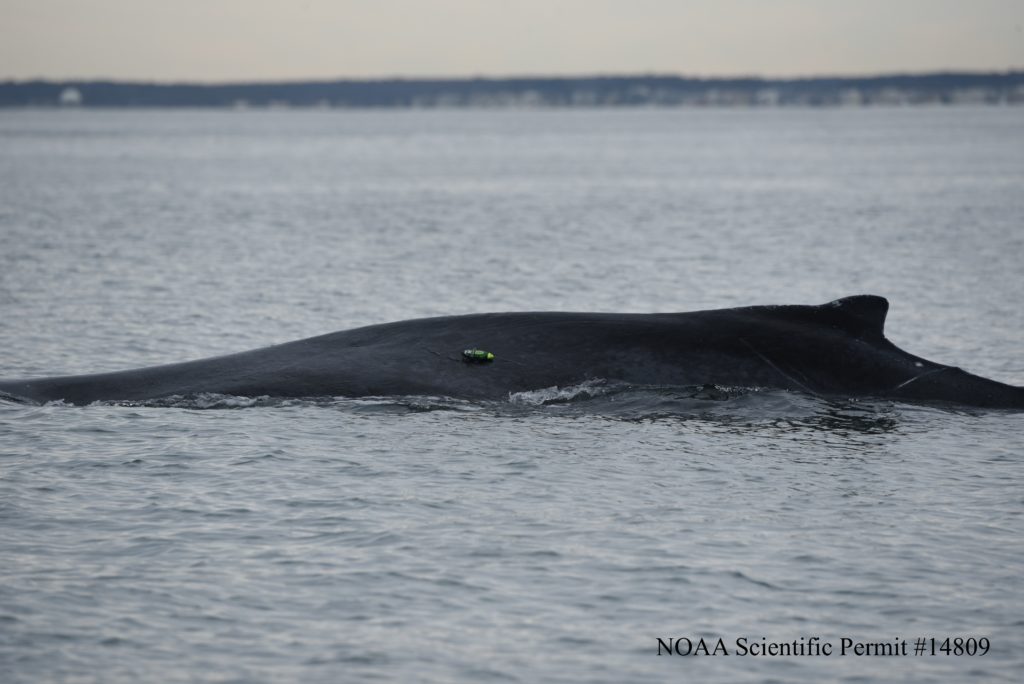Task 2
Estimating cue rates from tag data
Tag datasets which were already secured and where possible those identified in task 1 will be processed and analyzed to estimate cue rates for species of interest for the Navy. For each tag and cue type all the focal animal cues will be counted, hence obtaining a cue rate per tag. This represents estimates of cue rate per tag, which can be combined in a cue rate per species. In task 3 such data will be used to explore the variability of cue rates across a range of factors, exploring model-based approaches. We will estimate cue rates for at least Cuvier’s beaked whale, Blainville’s beaked whale and the sperm whale. Time allowing, data from pilot whales, Risso’s dolphins and narwhals might also be analyzed. There is also the potential to analyze data from several other species identified in task 1.
Team members
- Tiago Marques
- Diana Marques
- Carolina Marques
- Kalliopi Gkikopoulou
- Chloe Malinka
- Katarina Klementisová
Progress
To date we have identified a large number of tags which contain data that could be used under the ACCURATE efforts to estimate cue production rates. We have identified many more tags than those that we have man power to process under the ACCURATE effort. According to the plans, we are concentrating on tags from species that are of high interest for the Navy, including odontocetes like beaked and sperm whales, and balleen whales like the right, fin and blue whales. The table below presents a summary of tags we have identified and that could be used within ACCURATE:

Columns indicate processing status:
1. ACCU PRO: data was processed by the ACCURATE team
2. BAD TAGs: issue with tag, no data available
3. CONTACT owner: issue with tag but might be resolved
4. NOT PRO: tag is available but has not been processed for sounds
5. pre-ACCU PRO means tags were processed for sound production before ACCURATE
6. PRO NO CLI means that no automated sound processing was done, but what is required for ACCURATE is available
7. Task 4a means the data was processed for sound but the caller ID has not been uniquely defined yet (and some tags were processed under ACCURATE, others not).
Some of these tags are actually being processed under efforts from colleagues that will produce cue rate estimates that we hope to incorporate into the outputs of ACCURATE, like the Northern bottlenose whale that is the object of project HYPMO, led by Paul Wensveen.
Most of the TAGS we are working with are DTAGs, and we really appreciate all the effort that Mark Johnson and his team have put over the years on developing the tags and the tools to work with their data.

It is certainly admirable how such a small device can allows us to record information fundamental to understand the some of the largest of the world’s animals

What is at stake?
Given all the above data from acoustic tags, we must sieve through these to count the number of sounds present and from it to estimate the cue rates. It might seem like a straightforward task, and while it indeed is, at least conceptually, in practice a number of challenges make it less clear cut. Calculating cue rates from tag data is definitely easier said than done, and that practical diffculty was what led to project ACCURATE to become a reality. Within ACCURATE we use a variety of methods, spanning from manual detections to automatic detections, to estimate cue production rates for marine mammals.
Below, we can see examples of video-spectrograms from narwhals (Monodon monoceros, data from Marianne Marcoux). In these examples regular echolocation clicks are clearly visible (and audible!). In the first video snippet we have many regular echolocation clicks, as well as a couple of buzzes, at the start and and the end of the sampled period.
These animals interspread regular echolocation clicks (assumed to be produced during the finding-a-prey pahse) with buzzes (assumed to be honing on a prey and if sucessful ending with a capture attept). In the snippet below we have four of those buzzes:
Sometimes, distinguishing between regular echolocation clicks and buzzes (or other types of “noise”) is not that easy. In the example below we illustrate long buzzes, which are neither regular echolocation clicks nor typical buzzes associated with feeding events.
Deciding what to do about buzzes, long or short, regarding cue rates is fundamental, since these have much lower inter-click-intervals and hence including them or excluding them leads to considerably different sound production rates. It all depends on what are the sounds that our PAM systems will detect. An example of such a long buzz is shown below:
In general buzzes have much lower energy than regular echolocation clicks and hence they are less detectable from a PAM system. Given that, it might make sence to ignore these sounds when calculating the cue rates, since the cue rates should be for the sounds that we can detect during our survey in a regular PAM system.

